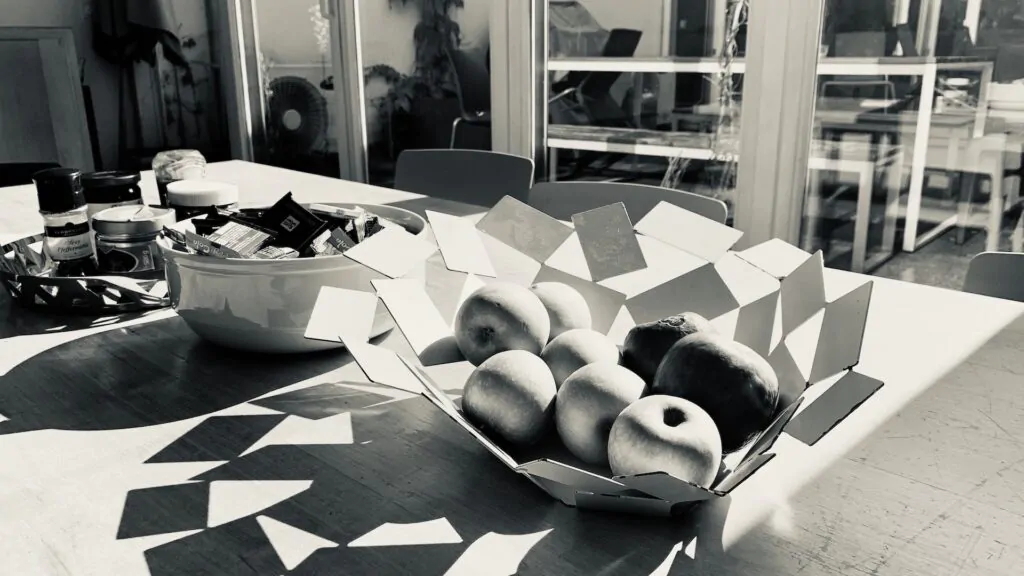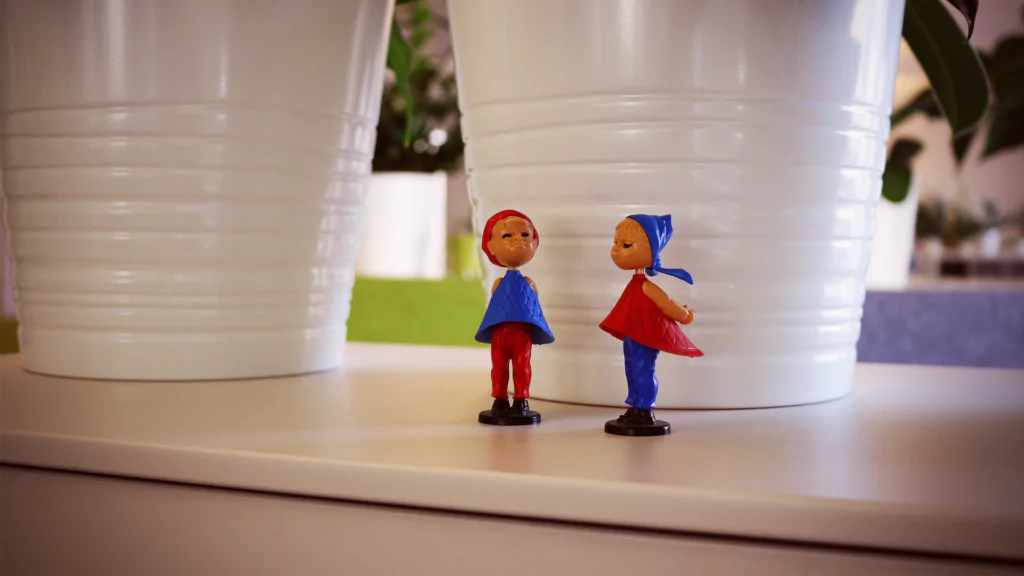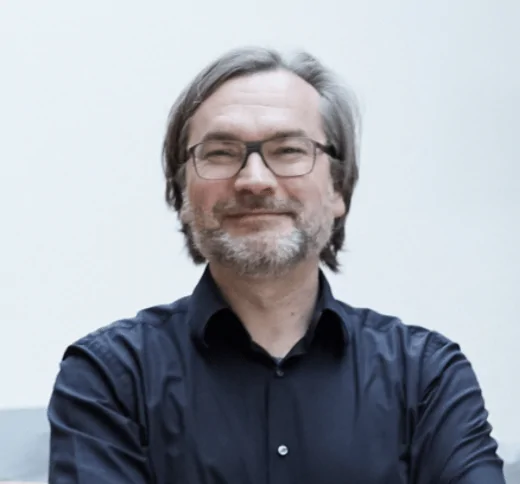At VI, people organize themselves into Crafts, have Masters, Goals and Manifestos. What’s the point?
In offices, the world of Craftsmanship is far away. Actually, you work at a desk, not a workbench; you use a computer, not a toolbox; you do brainwork, not handwork. At VI, things are a little different.
There are no wood chips in these agency rooms either, and no one hammers, except maybe once in a while into the keyboard. However, VI has decided to organize itself internally into Crafts, so to speak in guilds or trades. The goal: to become even better crafts(wo)men in the virtual world. Practical, qualitative, result-oriented.
The Craftmaster is responsible for developing his craft, building skills, picking up new techniques, keeping an eye on the industry.
Bricklayers, roofers, confectioners and car mechanics are of course not needed in a digital agency, but the Crafts are called Software Development, Business Design, User Experience, Communication and Product Leadership.
All employees who work directly on the digital solution for the customer are organized in these trades. Appropriate skills are taught, refined and expanded. People should learn from each other: the inexperienced from the experienced, some specialists from others, new employees from old ones and vice versa. The Crafts are led by Craftmasters who themselves are experts in their field. They are not only supposed to be bosses and to steer, but also to work on projects themselves, to be involved in the topics.

David Pereira is a Craftmaster. His craft: product leadership. He has been working at VI for one and a half years and was not familiar with this craft structure from other companies. That’s why he was surprised at first, but he thinks it makes perfect sense: “The Craftmaster is responsible for developing his craft, building skills, picking up new techniques, keeping an eye on the industry”. In the community, people exchange ideas about the tools of the craft, while the actual work on the client’s project is done in mixed teams, which are put together for the duration of the project, by the Craftmasters. Of course, no master craftsman’s diploma or journeyman’s certificate is required, just competence and experience.
David has great respect for craftsmanship
“I think it’s beautiful when someone can create something with their own hands”. In fact, he has a few carpenters in his family who make furniture and sculptures. “It inspires me a lot when I see that”. That’s why he appreciates VI’s reliance on craftsmanship even more because the digital isn’t that far removed from the tactile: “We create things, too”. You can’t touch them, but you can look at them and use them. And you can also enjoy them. The word craft automatically implies that someone has put love into it. Tinkering and tweaking something with dedication. Maybe like when you compare beer and craft beer. One is industrial, comes off the assembly line and is designed for mass consumption. The other is handmade, full of character, one of a kind. But what drives the individual? What motivates them? “We don’t just want to create a product that works, we want to be proud of it. ”

When we experiment and learn something, we try to do it with our goal in mind.
Having a Craft also means:
Experts among themselves. This encourages and challenges each individual. Sergio Vidangos, Craftmaster Software Development, believes this is a great benefit. He still remembers the previous organizational structure of VI, where people were more divided into groups, where the experts had little to do with each other: “The consequence was that there were many boundaries and no rituals, formats, meetings at all to make sure that experiences, maybe Dos and Don’ts, all the things learned, are passed on and built up”. Lost energy, missed opportunities. In the Craft structure, it’s a different story: People meet weekly on a small round and monthly on a large round to share new learnings from projects, successes and failures that affect their own discipline.

To deepen topics. To put some things up for discussion. That’s how knowledge transfer works. There is also a toolbox in each Craft with the tools available and recognized as functional. Standards that have been agreed upon. Basic things that are assumed to be known.
Not only that…
Every Craft has its formulated goal, the ambition. In software development, that would currently be Mastering emerging technologies for lasting solutions. “That’s so our north”, Sergio says. “When we experiment and learn something, we try to do it with our goal in mind”. They’ve also agreed on a quality metric to measure their work. One axis shows quality, the other efficiency. On one you can read whether a solution is clean, without bugs, on the other whether you have achieved it efficiently, virtually without burning money. Moreover, in every craft there exists a manifesto that conveys shared beliefs and basic attitudes, one could also say values. Not a rigid code, but a framework that is always being adjusted
To deepen topics. To put some things up for discussion. That’s how knowledge transfer works. There is also a toolbox in each Craft with the tools available and recognized as functional. Standards that have been agreed upon. Basic things that are assumed to be known.
Learning is important in all crafts or disciplines, but absolutely imperative in software development because the technical changes immensely fast.
“What you learned two or three years ago is already obsolete in some cases,” Sergio explains. That means always keeping your eyes open, trying things out and deciding which train to jump on. “You never really become an expert because the next thing is already around the corner”. Fortunately, because it’s this constant movement that he enjoys, and probably not just him: “I think it’s what a lot of people like about VI: you never stop being an apprentice”.




